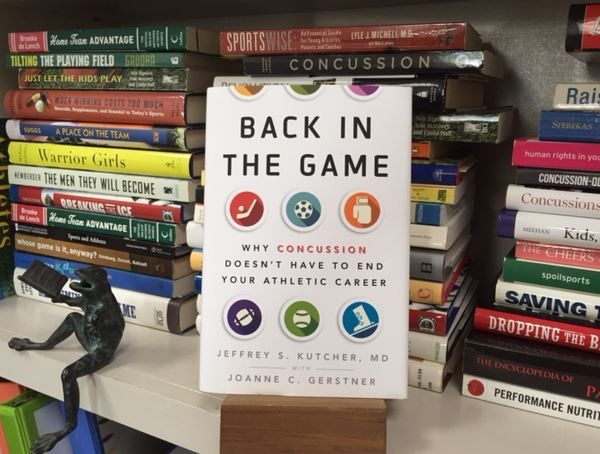“Back in the Game”: A Concussion Book That Stands Out In Crowded Field
Kutcher and Gerstner then introduce what I view as the book’s most valuable contribution to the concussion book genre: the medically inaccurate memes parents, coaches, and athletes are receiving from the media which have created a “tangible mounting fear of concussion” and a “state of near panic” about concussions, causing parents to avoid contact sports for their children based on “irrational fears of injury” which fail to weigh in the balance all the positive aspects of sports participation.
While the media’s emphasis on the heartfelt and tragic stories of athletes dealing with mental illness and those who commit suicide may sell newspapers, improve ratings, or get a website more clicks, the concern, Kutcher and Gerstner argue, is that it is driving the conversation to emotional places from which it’s an easy leap to conclude that contact sports, such as American football, must be a dangerous endeavor, only leading to pain and despair.
As a journalist and consumer of social media, I have been a frequent critic of the way media reports on concussions and head injuries. As someone who has tried every day to ground my advice on sports safety issues on science, I couldn’t agree more with Kutcher and Gerstner when they argue that such memes “seem like fact, only because anybody with a little knowledge – and sometimes a lot of agenda or desire to gin up a false debate – can get on television or radio, or go on a Twitter rant to vent their thoughts to a large audience without challenge or fact-checking.”
While the public has become more receptive to discussing concussions as an issue in sports, it is also heartening to know that the authors share my belief that the facts of the discussion have become “garbled” as a result of the media’s morbid fascination with the heartbreaking stories of athletes, including Dave Duerson, Junior Seau, Kosta Karageorge, who were assumed to have had concussions and then committed suicide because of depression. Players who die, sometimes through suicide, are declared “with great fanfare” to have gotten CTE from concussions, when the reality, the authors say, is that concussions and long-term effects like CTE “are two completely different processes that may not even be related.”
The big problem, medically, says Kutcher, is that “we are not even close to understanding the connections that might exist between sports, concussions, depression, suicide, and CTE,” so that linking concussions with suicides, is, in his view, “tenuous, and in a greater sense, also quite irresponsible.” Again, while he’s preaching to the already converted (I have been saying much the same thing for years), it is a message that all sports stakeholders need to hear.
The authors then move from an expansive and philosophical discussion of the role of the media in the concussion conversation to the nuts and bolts of concussion education, laying out in a series of well-organized chapters and in step-by-step fashion how concussions are identified, diagnosed, and treated, beginning with a discussion of the use – and misuse – of baseline computerized neurocognitive tests, the need for immediate removal from play when concussion is suspected, what to do in the first few hours after concussion, and the recovery process that follows. I found particularly helpful the way Kutcher and Gerstner divide the recovery from concussion into three phases (acute rest, relative rest, and gradual exertion phases), and use a mnemonic (B.R.A.I.N., which stands for Bike (B), Run (R), Agility (A), “In Red” (I) and No Restrictions (N)) to describe the basic framework for graduated exercise return-to-play protocol most experts recommend.



